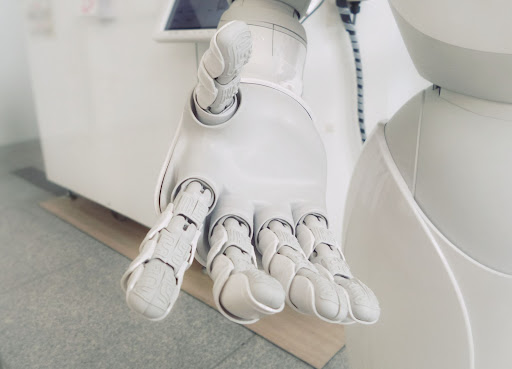Artificial intelligence has been at the forefront of many industry conversations this year, from arts to the automotive industry. While Artificial Intelligence offers a number of exciting innovations — such as help for self-driving cars, speech analytics, and computerized vision — others worry about the dangers of trusting systems with a lack of human input. And there are Intellectual Property (IP) concerns, as well. This is an exciting time for drivers and cutting edge companies.
In the creative arts sphere, AI art generators use the art or writing of others to “train” themselves to write or create art. Unfortunately, in many cases, the end result borders the line of plagiarism — enough that there have been several lawsuits to this effect. But what about the auto industry? In the auto industry, AI offers a number of possibilities but also a number of concerns.
AI in the Auto Industry
We already have some existing examples of AI in the auto industry, and more coming every day. It can be used in every aspect of the industry. AI robots can be used to construct vehicles, taking human construction out of it. Self-driving, autonomous vehicles that operate on vision sensors are an example of AI in the auto industry. There are also AI systems that are designed to offer driver assistance, such as automatic brakes and driver drowsiness detection.
Of course, these more ambitious feats of AI are still received with some uncertainty by the general public. Many worry that there are simply too many variables on the road for self-driving cars to ever have mass success. Regardless of varying opinions, AI doesn’t seem to be going anywhere any time soon, which leads many inventors to questions when it comes to AI and patenting.
How AI Affects Patenting in the United States
The good news is that AI in the automobile manufacturing sphere does not have the controversy that AI in the arts sphere has. AI databases are not being filled with past vehicle models and churning out cars that are essentially plagiarisms of past models. Rather, they’re learning skills, such as how to put a design together, how to use vision to drive and direct the vehicle, and so on.
It is worth noting that professionals in the auto industry who are not manufacturers — such as professionals in auto sales, mechanics, and more — may still need to think about where they get the art for their logos and promotional materials. We’ll discuss that in more detail later in this article. However, one prevalent question is how Artificial Intelligence may affect patenting when it comes to designing and manufacturing new vehicles.
One issue with AI innovations in the automobile world and patenting is that they largely qualify as patent eligible subject matter. Congress has already ruled not all software innovations may be eligible for a patent. Inventions that are based on ideas or mathematical algorithms that are too abstract are typically difficult to patent. This was discussed at the US Supreme Court in the 2014 Supreme Court ruling Alice Corp. v. CLS Bank International, 573 U.S. 208. Fortunately, artificial intelligence is a category that is generally considered as qualifying to seek patent protection and the US Patent and Trademark Office (USPTO) has established guidelines memorializing this exception.
This is important as multiple companies work towards developing self-driving cars or even autonomous rideshares. Tesla is working on self-driving cars and GM has developed Super Cruise for self driving. If the AI used cannot be patented, then the competition can use a similar system to further their own AI-driven vehicles. In order to patent AI-based software, you will need to make sure it is specific enough to meet the requirements of the USPTO. For example, Tesla has multiple machine-learning software patents in their attempt to create a self-driving car.
There is also the issue of AI-created inventions. In some cases, inventors create an AI which can then itself come up with inventions. One notable example of this was the Device for Autonomous Bootstrapping of Unified Sentience (DABUS), an AI created by Stephen Thaler. Thaler attempted to file two patents which listed DABUS as the inventor and was approved in South Africa and Australia.
However, when Thaler attempted to file the patent in the United States, it was denied. The USPTO required inventors of new inventions to be “natural persons,” thus excluding AI inventions. At least at this point, inventions created by AI may not be able to be patented according to the USPTO, though the US congress and the courts may revisit this issue.
How AI Relates to Branding and Marketing For Auto Professionals
Many auto professionals — whether mechanics, car salespeople, or executives of rideshare companies — commission art for their logo and other promotional imagery. AI can provide the imagery you need for your business, but this does not come without risk. There is currently a class action lawsuit from various artists suing AI companies over copyright issues related to their original artwork.
In an attempt to use real art to train AI algorithms to create art, many AIs are in fact reproducing something too close to copyrighted art. These copyrighted works of art are also being fed to the AI algorithm without permission of the original artist. Because AI is such a recent issue, courts and lawmakers are still determining how artist copyrights and trademarks will be protected.
It can help to speak with an experienced Garcia-Zamor intellectual property attorney to navigate you through the US Patent and Trademark Office and the US courts to solidify your rights via patents, trademarks, registered copyrights, et. Our team can help you determine the different ways that Artificial Intelligence will affect your patenting or intellectual property in the auto industry. Garcia-Zamor has over 20 years of experience, and we’re here to help you. Contact us today to learn more.







